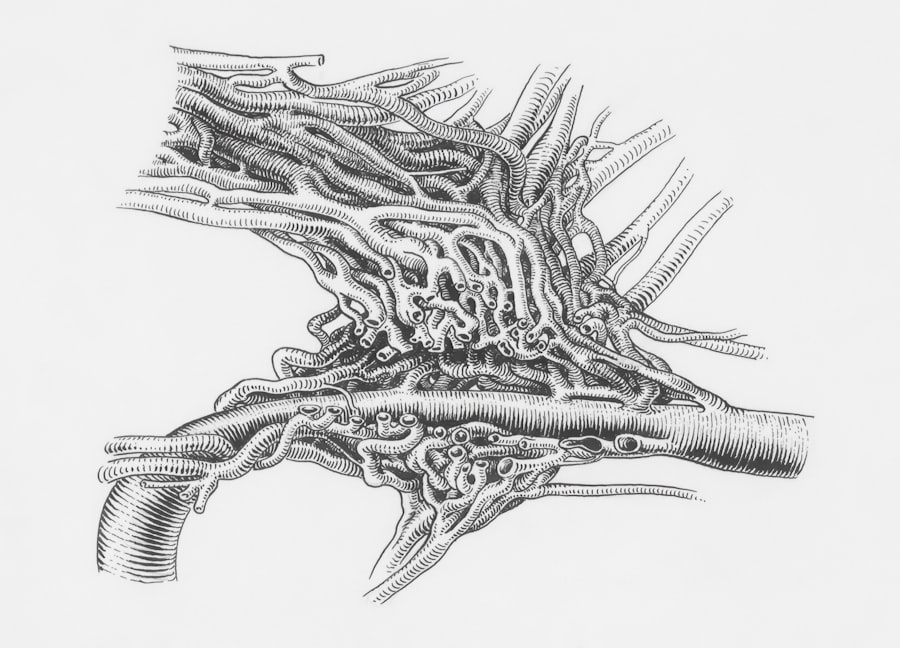Sarcopenia is a condition characterized by the progressive loss of muscle mass and strength, primarily associated with aging. As you age, your body undergoes various physiological changes, and one of the most significant is the gradual decline in muscle tissue. This condition can begin as early as your 30s, but it becomes more pronounced in your 60s and beyond.
Understanding sarcopenia is crucial because it not only affects your physical capabilities but also has broader implications for your overall health and quality of life. The loss of muscle mass can lead to increased frailty, reduced mobility, and a higher risk of falls and fractures, which can significantly impact your independence. Recognizing the importance of sarcopenia is essential for proactive health management.
It’s not just about aesthetics or physical appearance; muscle mass plays a vital role in metabolic health, immune function, and even mental well-being. When you lose muscle, your body’s ability to perform daily activities diminishes, which can lead to a cycle of inactivity and further muscle loss. By understanding sarcopenia, you can take steps to mitigate its effects, ensuring that you maintain strength and vitality as you age.
Key Takeaways
- Sarcopenia is the age-related loss of muscle mass and strength, which can lead to decreased mobility and increased risk of falls and fractures.
- Building and maintaining muscle mass is crucial for overall health, as it supports metabolism, bone density, and functional independence.
- Protein, carbohydrates, and healthy fats play essential roles in supporting muscle health and should be included in a balanced diet.
- Resistance training is highly beneficial for preventing sarcopenia, as it helps to build and maintain muscle mass and strength.
- Incorporating cardiovascular exercise into your routine can further support overall muscle health and improve cardiovascular fitness.
The Importance of Building and Maintaining Muscle Mass
Building and maintaining muscle mass is fundamental to your overall health and well-being. Muscle tissue is metabolically active, meaning it burns calories even at rest. This metabolic activity helps regulate your weight and can prevent obesity-related diseases such as diabetes and heart disease.
When you prioritize muscle health, you are not only enhancing your physical appearance but also improving your body’s efficiency in managing energy and nutrients. This is particularly important as you age, as maintaining muscle mass can help counteract the natural decline that occurs over time. Moreover, strong muscles contribute to better balance and coordination, reducing the risk of falls and injuries.
As you engage in activities that require strength, you enhance your functional capacity, allowing you to perform daily tasks with ease. Whether it’s lifting groceries, climbing stairs, or playing with grandchildren, having a solid foundation of muscle mass enables you to enjoy life more fully. Therefore, investing time and effort into building and maintaining muscle should be a priority for anyone looking to enhance their quality of life.
Nutrition for Muscle Health: The Role of Protein, Carbohydrates, and Fats

Nutrition plays a pivotal role in supporting muscle health, with macronutrients like protein, carbohydrates, and fats each serving unique functions. Protein is often hailed as the cornerstone of muscle building and repair. When you consume protein-rich foods, your body breaks them down into amino acids, which are essential for muscle synthesis.
It’s crucial to ensure that you’re getting enough high-quality protein in your diet—sources like lean meats, fish, eggs, dairy products, legumes, and nuts can provide the necessary building blocks for maintaining muscle mass. Carbohydrates also play an essential role in fueling your workouts and recovery. They provide the energy needed for resistance training and other physical activities.
When you engage in exercise, your body relies on glycogen stores—derived from carbohydrates—to power your muscles. Consuming adequate carbohydrates ensures that you have the energy to perform at your best during workouts while also aiding in recovery afterward. Additionally, healthy fats are vital for hormone production and overall cellular health.
Including sources of healthy fats like avocados, olive oil, and fatty fish can support your body’s functions while contributing to muscle maintenance.
The Benefits of Resistance Training for Preventing Sarcopenia
| Benefits of Resistance Training for Preventing Sarcopenia |
|---|
| Increased muscle strength |
| Improved muscle mass |
| Enhanced bone density |
| Reduced risk of falls and fractures |
| Improved balance and coordination |
| Enhanced metabolism |
| Improved insulin sensitivity |
Resistance training is one of the most effective strategies for preventing sarcopenia and promoting muscle health. Engaging in regular strength training exercises helps stimulate muscle growth by creating micro-tears in muscle fibers that repair stronger than before. This process not only increases muscle mass but also enhances strength and functional capacity.
Whether you choose free weights, resistance bands, or bodyweight exercises, incorporating resistance training into your routine can yield significant benefits. Moreover, resistance training has been shown to improve bone density, which is particularly important as you age. Strong muscles support strong bones, reducing the risk of osteoporosis and fractures.
Additionally, strength training can enhance insulin sensitivity and metabolic function, helping to regulate blood sugar levels and reduce the risk of chronic diseases. By committing to a regular resistance training program, you empower yourself to combat the effects of sarcopenia while reaping numerous health benefits that extend beyond just muscle mass.
Incorporating Cardiovascular Exercise for Overall Muscle Health
While resistance training is crucial for building muscle mass, cardiovascular exercise also plays an important role in overall muscle health. Engaging in aerobic activities such as walking, running, cycling, or swimming can improve cardiovascular fitness and enhance blood circulation throughout your body. This increased blood flow delivers essential nutrients and oxygen to your muscles, supporting their function and recovery.
Incorporating cardiovascular exercise into your routine can also help manage body weight and reduce fat mass. A healthy body composition is vital for maintaining muscle mass as you age; excess fat can lead to inflammation and hormonal imbalances that negatively impact muscle health. Striking a balance between cardiovascular exercise and strength training ensures that you are not only building muscle but also promoting overall fitness and well-being.
The Role of Rest and Recovery in Muscle Maintenance

Rest and recovery are often overlooked components of a successful fitness regimen but are essential for muscle maintenance. When you engage in intense workouts, your muscles undergo stress that requires time to repair and rebuild. Without adequate rest, you risk overtraining, which can lead to fatigue, decreased performance, and even injury.
Prioritizing recovery allows your muscles to heal properly while also preventing burnout. Incorporating rest days into your routine is crucial for long-term success. During these periods of rest, your body works to repair damaged tissues and replenish energy stores.
Additionally, quality sleep plays a significant role in recovery; it’s during sleep that growth hormone levels peak, facilitating muscle repair and growth. By recognizing the importance of rest and recovery in your fitness journey, you set yourself up for sustainable progress in maintaining muscle mass.
Lifestyle Factors that Contribute to Sarcopenia and How to Address Them
Several lifestyle factors can contribute to the development of sarcopenia, making it essential to address them proactively. Sedentary behavior is one of the primary culprits; prolonged inactivity can lead to muscle atrophy over time. To combat this issue, aim to incorporate movement into your daily routine—whether it’s taking short walks during breaks or engaging in active hobbies that keep you on your feet.
Another factor to consider is stress management. Chronic stress can lead to hormonal imbalances that negatively impact muscle health. Finding effective ways to manage stress—such as through mindfulness practices, yoga, or engaging in enjoyable activities—can help mitigate its effects on your body.
Additionally, avoiding smoking and excessive alcohol consumption is crucial; both habits can contribute to muscle loss over time. By addressing these lifestyle factors head-on, you empower yourself to take control of your muscle health.
The Importance of Adequate Hydration for Muscle Health
Hydration is often an overlooked aspect of muscle health but plays a vital role in maintaining optimal function. Water is essential for various physiological processes within the body, including nutrient transport and temperature regulation. When you’re dehydrated, your muscles may not perform at their best; this can lead to fatigue during workouts and hinder recovery afterward.
Moreover, proper hydration supports joint lubrication and reduces the risk of cramps during physical activity. As you engage in exercise—especially resistance training—your body loses fluids through sweat; replenishing these fluids is crucial for maintaining performance levels. Aim to drink water consistently throughout the day and consider increasing your intake during workouts or hot weather conditions to ensure that you stay adequately hydrated.
The Role of Supplements in Supporting Muscle Mass
While a balanced diet should be your primary source of nutrients for muscle health, certain supplements can play a supportive role in maintaining muscle mass. Protein powders are popular among those looking to increase their protein intake conveniently; they can be particularly beneficial post-workout when your muscles are primed for recovery. Additionally, branched-chain amino acids (BCAAs) may help reduce muscle soreness and promote recovery after intense exercise.
Creatine is another supplement that has garnered attention for its potential benefits in enhancing strength and muscle mass.
However, it’s essential to consult with a healthcare professional before starting any supplement regimen to ensure it aligns with your individual needs and goals.
Creating a Balanced Exercise Routine for Preventing Sarcopenia
To effectively prevent sarcopenia, creating a balanced exercise routine that incorporates both resistance training and cardiovascular exercise is key. Aim for at least two days of strength training per week targeting all major muscle groups; this could include exercises like squats, deadlifts, push-ups, or resistance band workouts. Gradually increase the intensity or weight as you progress to continue challenging your muscles.
In addition to strength training, include cardiovascular activities on most days of the week—whether it’s brisk walking, cycling, or swimming—to enhance overall fitness levels. Flexibility exercises such as yoga or stretching should also be part of your routine to improve mobility and prevent injuries. By diversifying your exercise regimen, you create a comprehensive approach that addresses all aspects of fitness while effectively combating sarcopenia.
Seeking Professional Guidance for Preventing and Managing Sarcopenia
As you navigate the complexities of preventing sarcopenia and maintaining muscle health, seeking professional guidance can be invaluable. A qualified personal trainer or physical therapist can help design a tailored exercise program that aligns with your specific needs and goals while ensuring proper form during workouts to prevent injury. Additionally, consulting with a registered dietitian can provide insights into optimizing your nutrition for muscle health.
Regular check-ins with healthcare professionals can also help monitor any changes in muscle mass or strength over time. They can offer personalized recommendations based on your individual circumstances while addressing any underlying health concerns that may impact your ability to maintain muscle mass effectively. By enlisting professional support on this journey toward better muscle health, you empower yourself with the knowledge and tools necessary for long-term success against sarcopenia.
Sarcopenia is a condition characterized by the loss of muscle mass and strength, often associated with aging. It can significantly impact the quality of life, leading to decreased mobility and increased risk of falls and fractures. To combat sarcopenia, it is essential to engage in regular physical activity, particularly resistance and strength training exercises, and maintain a balanced diet rich in protein and essential nutrients. For more detailed information on sarcopenia and strategies to prevent it, you can read a related article on the topic by visiting this page. This resource provides valuable insights into understanding sarcopenia and offers practical tips to help mitigate its effects.
💰 The Secret History of the Dollar: How Oil Replaced Gold (The Petrodollar Mystery)
FAQs
What is sarcopenia?
Sarcopenia is the age-related loss of muscle mass, strength, and function. It is a natural part of the aging process, but it can be accelerated by factors such as inactivity, poor nutrition, and chronic illness.
What are the symptoms of sarcopenia?
Symptoms of sarcopenia can include weakness, loss of stamina, and difficulty performing everyday tasks. It can also lead to an increased risk of falls and fractures.
How is sarcopenia diagnosed?
Sarcopenia is typically diagnosed through a combination of physical examination, muscle strength testing, and imaging studies such as dual-energy X-ray absorptiometry (DEXA) scans.
How can sarcopenia be prevented?
Sarcopenia can be prevented or slowed by engaging in regular resistance and strength training exercises, consuming an adequate amount of protein, and maintaining overall good nutrition and health habits.
What are the treatment options for sarcopenia?
Treatment for sarcopenia often involves a combination of exercise, nutrition, and sometimes medication. Physical therapy and working with a nutritionist or dietitian can also be beneficial.
What are the risk factors for sarcopenia?
Risk factors for sarcopenia include aging, inactivity, poor nutrition, chronic illness, and certain medications. Hormonal changes and inflammation can also contribute to the development of sarcopenia.
